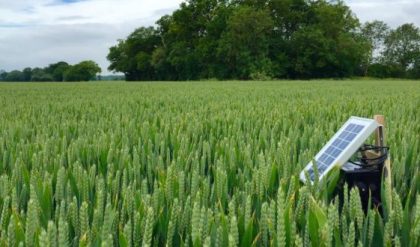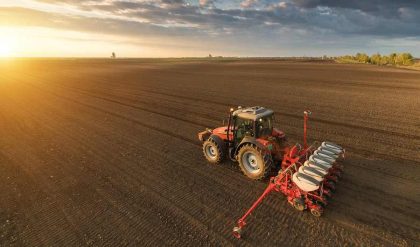Access
A basic feature of any greenhouse is access. If you can’t get in it, there’s no sense having it. I know that sounds utterly basic and something that goes without saying, but it’s designed to get us thinking. To be sure, the gardener needs to get inside the greenhouse. Okay, that’s a 30 inch pedestrian door. What about a wheelbarrow? Okay, that’s a 40 inch pedestrian door. How about a rototiller? Now that you mention it, I’ll need a 48 inch pedestrian door. If you have quite a large growing area, might it be necessary to get a garden tractor, estate tractor or other rather large implement inside? Perhaps you’ll need a larger door or a double door where half of it allows for pedestrian access and the other half allows for equipment and other larger items to pass through. Such large access points could also be a way to vent the structure, so consider louvers and screens as well.
Vents
One of the first greenhouse features necessary is a means of controlling the climate – most importantly, venting excess heat. In the absence of vents, a greenhouse will quickly overheat. Vents are also necessary to allow insects to enter the greenhouse in support of pollination. There are three basic types of vents: automatic electric; automatic hydraulic; and manual. Manual vents will be the least expensive to install, but they require operator interface at least twice a day. If there will be someone present in the morning and in the evening, then manual vents are a good option to consider. They are inexpensive and cost nothing to operate. Automatic hydraulic vents operate based on the temperature they sense. When the fluid inside them warms up a bit, they open. When it cools, they close. The weight capable of being lifted by hydraulic vents is generally limited, so these should be used in smaller greenhouses that have smaller and lighter vents and windows that require opening. Be aware that hydraulic vents operate slowly, and their operation is based on the temperature they sense at the vent. So, placing them at or near the roof line makes sense because that is where warm air will accumulate. Automatic electric vents are another good choice. They are somewhat costly, but allow a greenhouse gardener to coordinate their operation with the internal temperature of the greenhouse. Thermostats can be used to switch live load powering the vents. I typically set my vents to open when the greenhouse is warm, and close when it starts to cool down. This preserves thermal energy within the structure and allows me to be someplace else during times of the day when I might otherwise need to open and close the vents manually. One of the advantages of using a thermostatic control for an automatic electric vent is they can be coordinated with an exhaust fan. And, the thermostat can be centrally located so vents and fans are operated based on internal temperatures that better reflect overall temperature within the structure.
Fans
Fans inside a greenhouse are necessary for two basic functions. The first function is to ventilate the structure so it doesn’t overheat. Overheating can kill plants and hasten the deterioration of greenhouse film. One of my greenhouses is set up to turn the exhaust fan on (after vents have already been open for a while) when the interior reaches a high temperature. Another of my greenhouses is set to turn on the fan and vents when elevated temperatures are detected. The second use for fans is to circulate air within the greenhouse. This is less a concern for the hobby gardener, but a greater concern for those in a commercial operation where the structure can be rather large. Air circulation helps reduce humidity and minimizes areas with stagnant air. In addition to helping reduce humidity, moving air also discourages pests that would like a nice sheltered environment in which to set up house.
Rollup Sides
Rollup sides are a nice alternative to traditional vents and fans. Like manual venting, a rollup side requires an operator to be present in the morning and in the evening when operation is most likely necessary. Roll up sides can be installed on nearly any type of greenhouse surface, but are most commonly found on sides of a structure that have an arch or angle to them such that when the side is rolled down, gravity is naturally holding the greenhouse film in place against the structural members. For this reason, role up sides are often found on Quonset hut style greenhouses.
Heaters
If you’re going to be a serious commercial grower, chances are good that a heater of some sort will be required to enable you to get a jump on the coming season. It’s too late to start growing seedlings for the market when the weather turns warmer as that’s when your customers will want to buy those seedlings and plant them. If your needs are small, an electric heater with a fan will likely do just fine. If your needs are large, you’ll want to go with a natural gas or propane heater that incorporates a fan to distribute the warm air. Some of the smaller gas heaters on the market don’t use a fan, and that’s where an interior fan can help distribute heat more evenly. The advantage of an area heater is that it heats up the greenhouse, regardless of the configuration of your plants. For smaller or specialized applications, one might elect to use soil heating cable in or under beds, or heating mats under flats. Hydroponic heating can also be used in bench configurations. One of the advantages of such in/under soil heating methods is heat is applied to plant roots, just where it’s most appreciated. A disadvantage is that it isn’t conducive to rearranging plants, tables and benches. Each time the configuration changes, the heating system must change with it.
Shelves and Benches

As is the case in most work areas, shelves are a handy way of keeping tools and resources available, yet in their assigned place. Shelves can hold small tools, supplies, and other items that are useful for planting and managing crops. The advantage of shelves is they make use of wall space for storage, and keep tables and benches clear for work activities. Workbenches and tables come in handy for potting plants, setting up seedling trays, processing your harvest, or just about any activity where you need a work surface. Since tables and work benches take up valuable growing space, they should only be large enough to facilitate the essential work associated with greenhouse gardening.
Water
I don’t have to tell you that water is essential for greenhouse operations, but it is worthwhile noting that having an indoor water supply would be most convenient. These typically take the form of a freeze proof hydrant that obviates draining waterlines in the winter. These devices have the underground water connection deep enough to avoid freezing temperatures, while the above ground fixture drains automatically each time the hydrant is returned to the closed position. For larger greenhouses, install more than one hydrant as this will minimize the amount of hose being dragged about to water plants. Also, if you’re dealing with new construction, you’ll want to plumb in your hydrants as part of the “dirt work” before any structure is assembled.
Electricity
While you’re bringing in water, you might as well bring in electricity. It’s another essential resource that you’ll need in any greenhouse where you intend to have a serious plant growing operation. This would include even smaller hobby greenhouses. Just think for a moment about what electricity can provide for you:
· vents and fans for climate control
· fans for air circulation
· electric heaters and fans
· seedling heat mats
· underground heating cables
· pumps
· lights
You might even care to have a radio, portable stereo system, and rechargeable phone system and power tools in the greenhouse, so having electrical outlets at workstations and in other places will be convenient indeed.
Lights
Perhaps the most common resource we use in a home is lighting. For many greenhouse gardeners, lighting will be a much less frequently used resource, but nonetheless important. If you intend to work after dark or use lights to get seedlings started, then various forms of lighting will be desirable. In a commercial operation or one that involves hydroponics or aquaponics, lighting will likely become far more important to compensate for equipment that might block natural sources of light and to offset low angle natural light during the off season. Having adequate lighting in the greenhouse allows early morning and late evening operations. In other cases, there may be recesses within a greenhouse or other factors that create shaded areas. It may be wise to provide supplemental light for plants in these areas, especially when they’re just getting started, or during times of the year when natural light isn’t sufficient because it’s not directly overhead during the day or it’s limited in duration.
Solar Collection
The last feature of a greenhouse that I think needs to be discussed is the manner in which solar energy is collected and stored. This topic deserves its own discussion, but let me highlight some of the basics so you’re acquainted with the features that are common in some greenhouses. Solar collection takes basically two forms: active and passive.
Passive Solar Collection
Passive solar collection is by far the most common and certainly the most reliable. It simply involves having large amounts of thermal mass inside the greenhouse that slowly acquires energy from the sun during the day and releases it slowly after the sun goes down. Items such as soil, concrete paving blocks, bricks, and dark-colored drums filled with water are excellent examples of thermal mass used in passive solar collection systems.
Active Solar Collection
Active solar collection also uses thermal mass, but it relies on fans and pumps to transport warmed water or air to and from some sort of solar collector. As an example, some greenhouses have an underground piping system that warms the soil below the surface by using a pumping system, storage tanks and solar water heaters. Such systems use the soil as thermal mass, so they make use of a huge thermal mass in the form of soil, and maximize solar gain by capturing and distributing it with an active solar collection system.





Comments are closed.